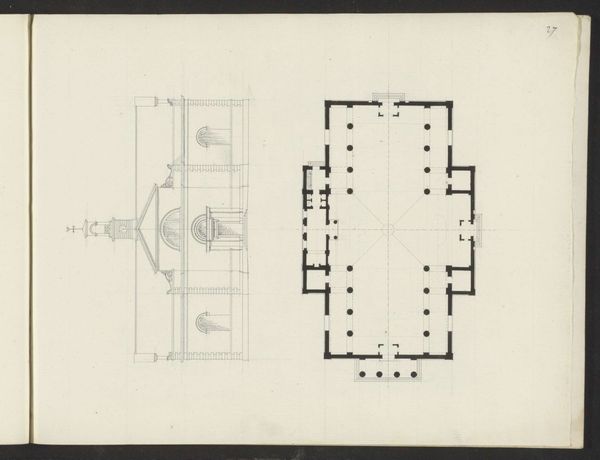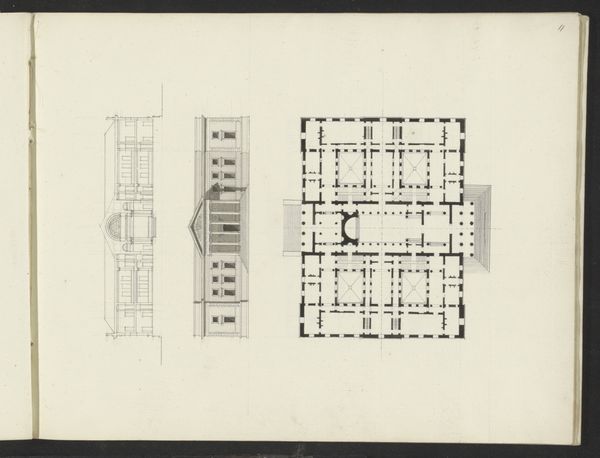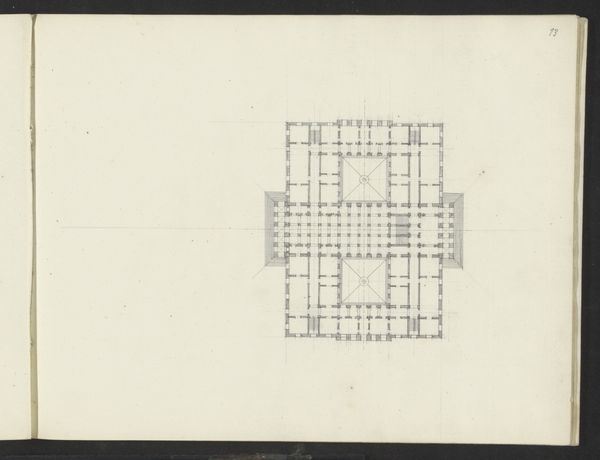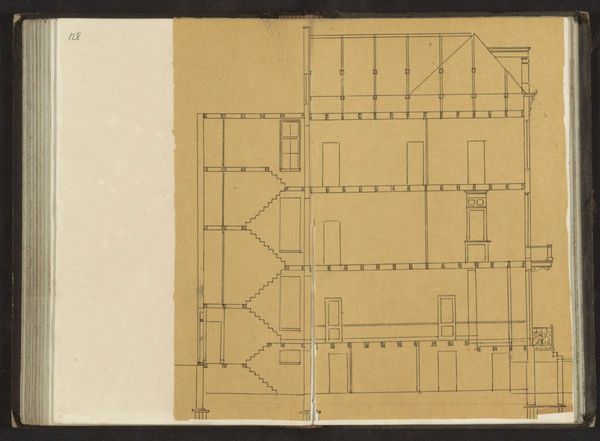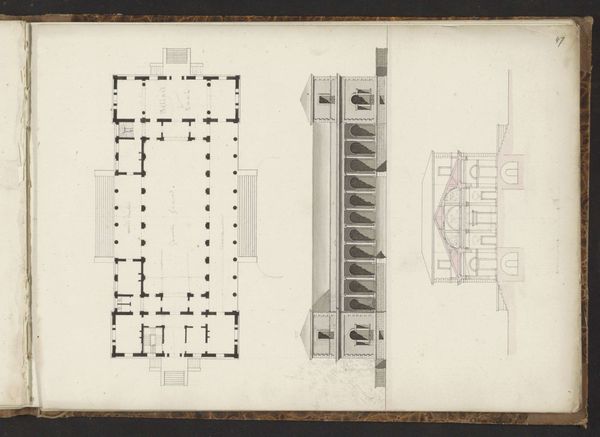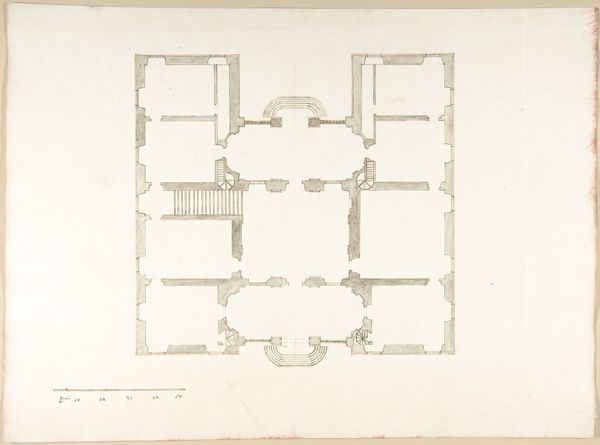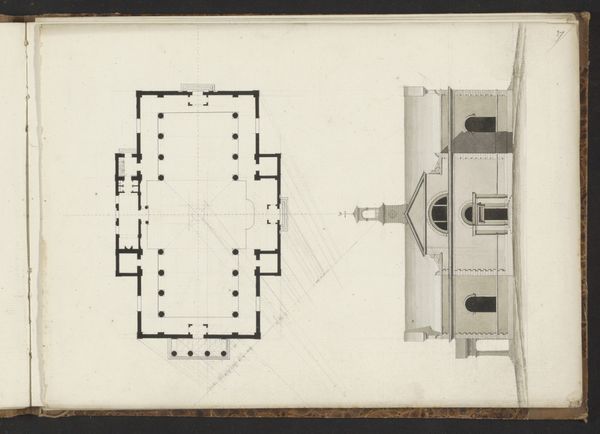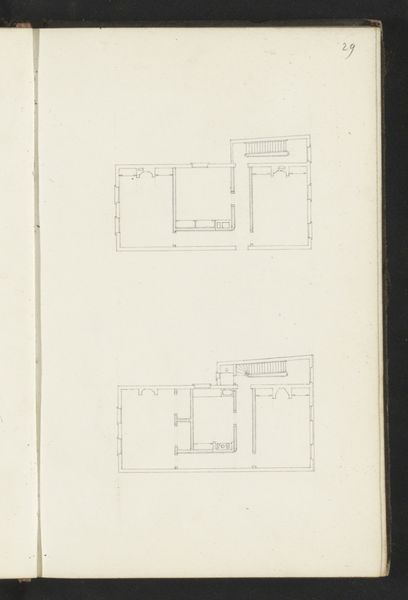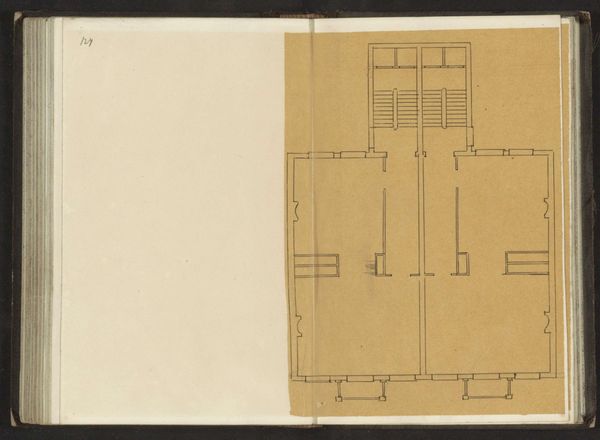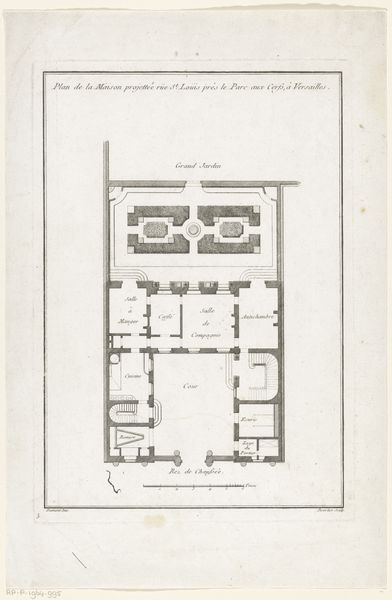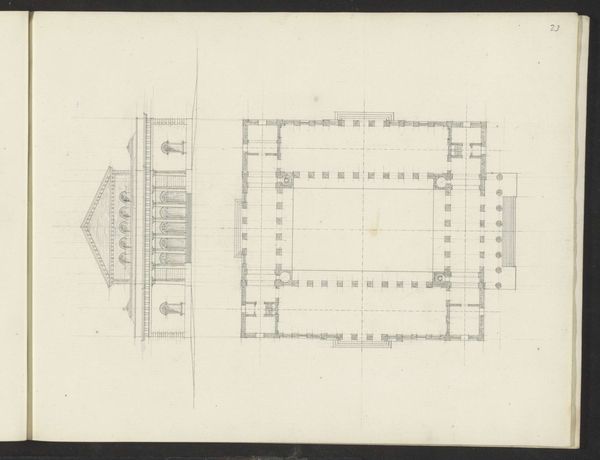
drawing, paper, architecture
#
drawing
#
paper
#
geometric
#
line
#
cityscape
#
architecture
#
building
Copyright: Rijks Museum: Open Domain
Willem Springer Jr. drafted this architectural design featuring a building's facade and floor plan. Note the classical pediment surmounting the structure's entrance. This triangular form, reminiscent of ancient Greek temples, speaks of order and authority. It evokes the architecture of the Roman Empire, where the pediment was adapted as a symbol of imperial power and divine sanction. Think of the Pantheon or any number of triumphal arches. Consider how this motif reappears throughout history. From Renaissance palazzos to Neoclassical government buildings, the pediment symbolizes stability. It suggests an unchanging ideal, an eternal return to established principles. It also connects emotionally to our subconscious as a powerful desire for order, security, and the continuity of values. Observe how the pediment echoes through time, shifting from sacred temples to seats of secular power. It is a testament to how symbols evolve, constantly adapting to new cultural contexts.
Comments
No comments
Be the first to comment and join the conversation on the ultimate creative platform.
